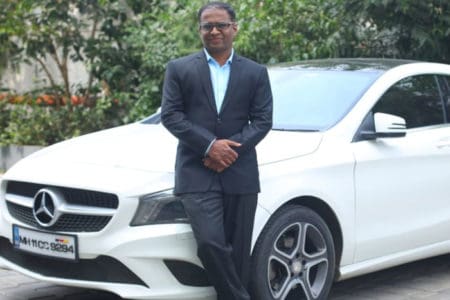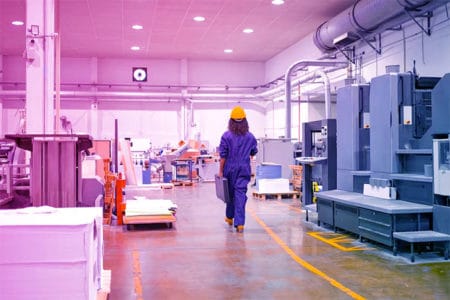 The Indian Automobiles sector is a significant driver to the country’s macro-economic growth, contributing nearly 7 percent to the country’s GDP. Automotive components is a $515 billion industry. As of 2019, the sector recorded a revenue of $57 billion, surpassing Germany in sales to become the 4th largest in the world. The year 19-20 caused a downturn due to the pandemic, resulting in the automobile industry falling by 18 percent and automotive components by 12 percent, to $50 Billion. The year ’21 is expected to be a year of growth, while a rebound is expected in 2022.
The Indian Automobiles sector is a significant driver to the country’s macro-economic growth, contributing nearly 7 percent to the country’s GDP. Automotive components is a $515 billion industry. As of 2019, the sector recorded a revenue of $57 billion, surpassing Germany in sales to become the 4th largest in the world. The year 19-20 caused a downturn due to the pandemic, resulting in the automobile industry falling by 18 percent and automotive components by 12 percent, to $50 Billion. The year ’21 is expected to be a year of growth, while a rebound is expected in 2022.
“Despite this, the industry did better and we are at pre-covid levels. A lot of lessons were learned during this period on financial prudence and agility. Unfortunately, our strong growth has met with such strong headwinds prevalent in the global market,” said Vinnie Mehta, Director of Automobile Components Manufacturers Association.
Automotive Growth
A global semiconductor shortage has been disrupting global automotive production. These are used in electronic control units in cars, like Brakes, safety devices, and many more. It is used for engine control in vehicles that follow BS-VI norms. This shortage is expected to affect global light vehicle production and is estimated to fall in the first half of 2021. This slowdown in supply is expected to impact the demand in OEMs, which in turn would rub off on the automotive components sector. According to Crisil’s credit ratings, this sector is expected to rebound in FY22 after two years of double-digit decline in profits and revenue due to the pandemic. The expected revenue growth would be between 21-23 percent as compared to 13 and 8 percent in FY 2020 and 2021, respectively.
“The silver lining is that the demand continues to be strong and our Industry is far away from its saturation point. We expect strong growth of vehicle penetration to be happening every year,” said Vinnie. “This growth would also be credited to the regulations being pushed from the Government’s end.”, he added.
He also added that over 40 regulations have been made for the sector. There has been no country that has skipped emissions as India has. In three years, from 2017 to 20, India moved from Basel 3 Norms to Basel 6 Norms. There has been a strong push on the evolution of tech from the government which the industry has welcomed.
“It is also important that a well-agreed roadmap on regulations on tech should be made. Any ad-hoc regulations can be very detrimental to the industry,” added Vinnie.
Tech in the Automotive Sector
The automotive sector has been a very traditional brick-and-mortar with a very complex value chain system. It has been adopting digital technologies during the time of the pandemic, which has been a challenge, mainly in Tier 3 and 2 regions.
“We can say the journey to digitization and automation has begun during the pandemic. It has created awareness and the need to accept digital technologies. But the issue here, many in this region, adopted a low-cost automation solution,” said Vinnie Mehta.
A low-cost automation solution allows for a lesser dependency on the labor force. For instance, automating the shop floors for maintaining social distancing. According to Vinnie, this is where industry 4.0 also begins.
“There are many advantages a company can gain from Industry 4.0. To mention a few, analyzing the data and slicing it so the right personnel can access the data they need for purpose, using data from the machine to reduce cost. There is scope and room to develop more in an industry where Work from Home was scoffed at to where it has aided in reducing the overhead cost,” added Vinnie.
Associations Efforts During Pandemic
Vinne further added that there still lacks an understanding of IT adoption. Education on this front is necessary. ACMA had a digital committee set up to help its members in reaching out to a group of experts for guidelines on IT. It has conducted various webinars to introduce solution providers and start-ups that work in online automation.
ACMA has plans to launch a digitization cluster that would be handheld regarding the adoption of IT. These would have companies ranging from small to mid-sized. It had also conducted various webinars on business development, a buy-seller meet, and events with various trade partners, like Taiwan, the US, Japan, and the EU during the Unlock period.
“We heightened our communication within the members and other stakeholders to strategize a solution during the lockdown. We indulged in a lot of effective and meaningful communication to upskill our members and others in the value chain. We were also constantly in touch with the government to relay the industry situation to them,” said Vinne on the activities performed for the industry upliftment during the pandemic.
Indian Vehicle Penetration and Sustainable Growth
The Automotive Industry had tremendous growth in tech and the sector continues to make innovative solutions across the globe. India has adapted itself to changing times and demands. India is expected to surpass Japan and become the 3rd largest market by 2030. The vehicle penetration for this is expected at 15 percent per annum. Currently, it is around 20 for every 1000 people as compared with China where it’s around 80 per 1000 people, while the US has around 800 per 1000 people.
“India currently is not ready for a maximum tech invasion” added Vinnie. Any over-engineered products would not be accepted if the market is not ready for them.
“There is a lot of push and pull in the industry to take things forward. The industry should focus on a sustainable environment and offer products with a consciousness to provide a comfortable product that offers a good experience. This is a tough balance to meet,” added Vinnie.
ACMA and SIAM have been working towards a sustainable goal. They have also set up a task force to cut down imports. “The newly introduced Production Linked Incentive scheme has the highest allocation for the auto sector as compared to others”, added Vinnie. This, according to the Association, would help the sector be more globally competitive and gain more share. This would also bring the production to be done locally, reducing the imports.
EV Penetration
India has been rigorously pushing Electric Vehicles adoption in the country but to very little success. “Globally, the EV sales would not be more than 2 percent, out of which is in China”, said Vinnie. For sustainability, electric products would be the most preferred choice, but like India, which is a highly thermal-dependent energy generator, it would not be a good choice. The charging would increase the power consumption.
“Till now, I haven’t come across a clear road map collectively from the industry on EV front. We are still far away from the adoption of EVs. In simple, there is no ecosystem approach. A lot of work has to be done in this, and a sustainable and environmentally friendly approach to power generation should be looked at. Beyond this, we are moving in the right direction, with many states coming up for EV mobility and incentives,” added Vinnie.
Future of the Sector
The traditional automotive sector would be present for a few more years and would continue to evolve, feels Vinnie. The EV landscape, however, would take time to evolve. The industry would evolve itself to be more efficient in emissions and technology in another 5 to 10 years.
“With the changes happening in the global industry, instead of attempting to be more self-reliant, we need to build our sector based on our capabilities and add more values. ACMA and SIAM are also working on significant localization but without losing China. Most countries are looking at a China + 1 policy. India should make use of this and become that +1,” said Vinnie.













